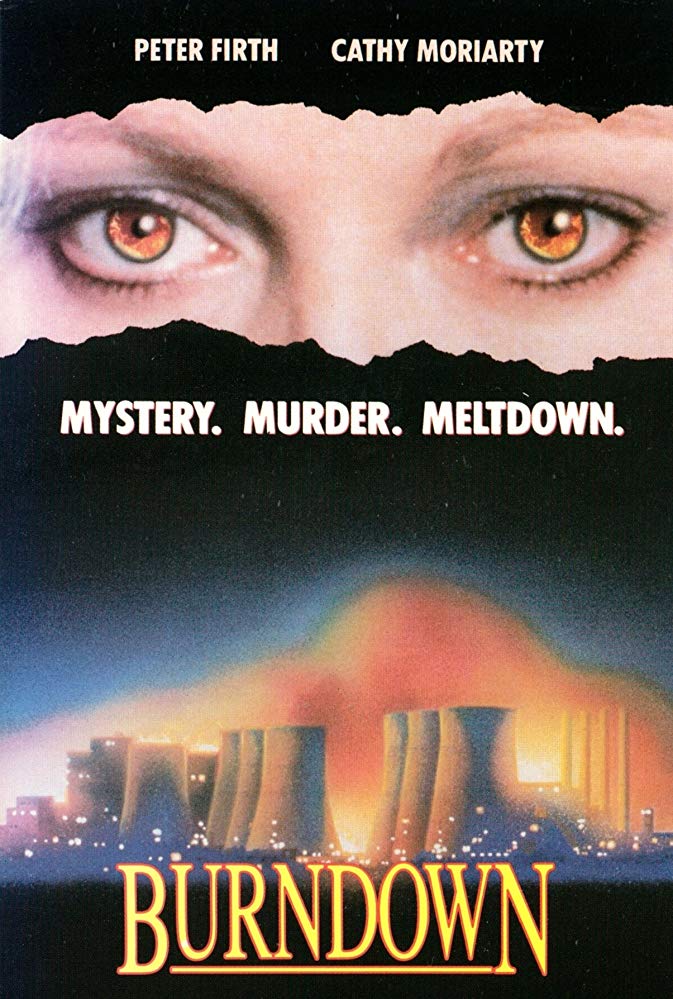UK. 1989.
Crew
Director – James Allen, Screenplay – Anthony Barwick & Colin Stewart, Based on the Novel by Stuart Collins, Producer – Colin Stewart, Photography – Paul Michelson, Music – Tony Britten, Special Effects – Rick Creswell, Production Design – Mike Fowlie. Production Company – Loggia Film.
Cast
Peter Firth (Sheriff Jake Stern), Cathy Moriarty (Patti Smart), Michael McCabe (Doc Frank Roberts), Hal Orlandini (Dr James Manners), Hugh Rouse (George Blake), Victor McIlleney (Henry Warriner)
Plot
In the small town of Thorpeville, Florida, Sheriff Jake Stern and the coroner discover that the body of a slaughtered woman, the third such identical killing, is radioactive. The only possible source of radiation is the nearby nuclear power plant but this was shut down five years ago. Plant management strongly deny any possibility of leaks. As Stern persists in his investigation through official cover-ups and attempted frame-ups, he discovers a secret in the heart of the power plant.
Despite the Florida location and American accents, Burndown is actually a British production, filmed for the most part at Pinewood Studios.
It is not a particularly well known film. The way guides tend to synopsise it – “police search for a radioactive serial killer” – it sounds like a cheap tv movie or a would-be Silence of the Lambs (1991) cash-in with bizarre pretensions to Green politics. None of which is actually the case, nor does the film’s respectably serious plot justice. And all of which suggests a luridness which the rather dreary film on display could well do with the aid of.
Unfortunately, Burndown is made in a flat, dull directorial style. Director James Allen drags proceedings out, repetitively moving between various killings, Peter Firth and Cathy Moriarty’s meetings at a bar, conspiratorial goings-on and denials from the plant and back again. Peter Firth adopts a convincing American accent but still plays in the same cold and closed off manner he always does.
There is some attempt to inject a horror film atmosphere with cuts away to partial glimpses of a leprously rotting figure – but the effect is too reminiscent of cheap 1950s horror films and clearly sits at odds with the more naturalistic explanation the film opts for. That said, the dreariness of the film is almost entirely saved by its twist ending – a real surprise that does enter into the realms of science-fiction – and which almost does makes the film worthwhile.


